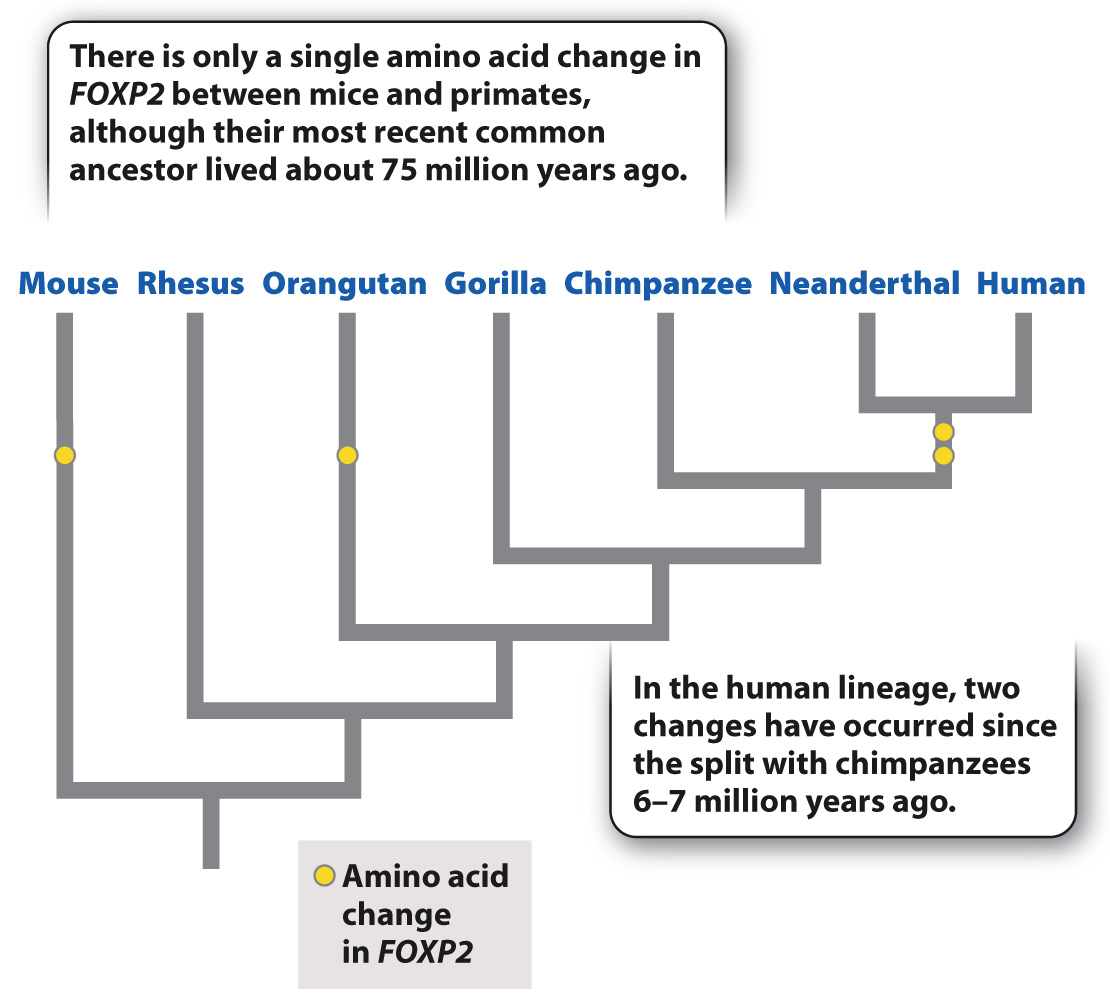The human and chimpanzee genomes help us identify genes that make us human.
The key genetic differences between humans and chimpanzees must lie in the approximately 1% of protein-
A gene that has attracted a lot of interest is FOXP2, a member of a large family of evolutionarily conserved genes that encode transcription factors that play important roles in development. Individuals with mutations in FOXP2 often have difficulty with speech and language. Interestingly, laboratory animals whose FOXP2 has been knocked out also have communication impairments. Songbirds are less capable of learning new songs, and the high-
Studies of the gene’s amino acid sequence reveal a pattern of extreme conservation. The sequences in mice and chimpanzees, whose most recent common ancestor lived about 75 million years ago, differ by a single amino acid (Fig. 24.14). However, two amino acids are present in humans but absent in chimpanzees. Studies of Neanderthal DNA have shown that Neanderthals possessed the modern human version of FOXP2. The presence of the same version of the gene in both species suggests that the differences arose in the hominin line before the split between our species and Neanderthals, which occurred at least 600,000 years ago.

FOXP2 gives us a glimpse of the genetic architecture of the biological traits that are likely to be important in the determination of “humanness.” Those two differences in amino acid sequence are intriguing, but they do not a human make. Substitute the human FOXP2 gene into a mouse and you will not get a talking mouse. The critical genetic differences are many, subtle, and interacting.
Quick Check 4 The FOXP2 gene is sometimes called the “language gene.” Why is this name inaccurate?
Quick Check 4 Answer
It is inaccurate to label FOXP2 the “language gene” for several reasons. First, the gene is expressed in many tissues, so its effects are not limited to speech and language. Second, many genes are required for language, not just FOXP2. Nevertheless, its association with vocal communication in multiple species is striking.